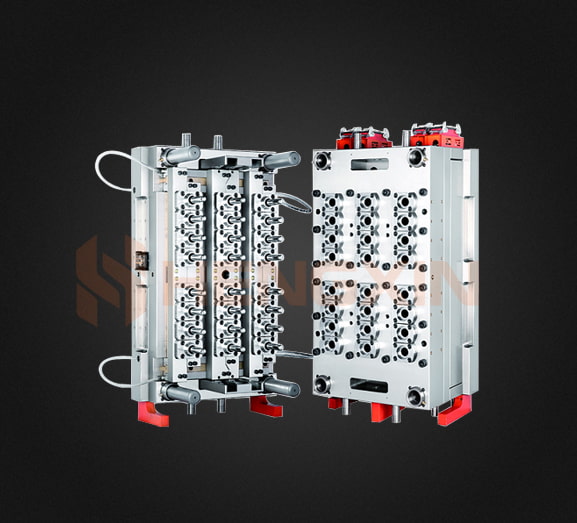Summary:Preform molds are an essential component in the production of plastic bottles or containers. Proper maintenance of prefo...
Preform molds are an essential component in the production of plastic bottles or containers. Proper maintenance of preform molds is crucial to ensure the quality and efficiency of the manufacturing process. Here are some maintenance tasks typically required for preform molds:
Regular Cleaning: Clean the preform molds regularly to remove any residue, debris, or contaminants that can affect the quality of the preforms. Use appropriate cleaning agents and techniques recommended by the mold manufacturer.
Lubrication: Apply a suitable lubricant to the moving parts of the mold to minimize friction and ensure smooth operation. Lubrication helps prevent wear and tear and extends the lifespan of the mold. Be sure to use lubricants that are compatible with the mold materials and do not adversely affect the preform production process.
Inspection: Perform routine inspections of the preform molds to identify any signs of damage, wear, or misalignment. Inspect the mold components, such as cores, cavities, cooling channels, ejection systems, and fastening mechanisms. Look for cracks, dents, excessive wear, or any abnormalities that may impact the mold's performance.
Maintenance and Repair: Carry out necessary maintenance and repair tasks based on the inspection findings. This may include replacing worn or damaged parts, repairing or polishing surfaces, or realigning components. Follow the guidelines provided by the mold manufacturer or consult with experienced mold technicians for appropriate repair procedures.
Temperature Control: Monitor and maintain the appropriate temperature conditions during preform production. Improper temperature control can lead to defects in the preforms and affect mold performance. Ensure that the cooling channels are clean and free from any blockages or scale buildup that may hinder proper cooling.
Storage: When the preform molds are not in use, store them in a clean and dry environment to prevent corrosion or damage. Use appropriate protective measures such as applying a rust inhibitor or coating the mold surfaces with an anti-corrosion agent.
Documentation: Keep detailed records of maintenance activities, repairs, and any modifications made to the preform molds. This information will be valuable for tracking the mold's history, identifying recurring issues, and scheduling future maintenance tasks.
It's important to note that the specific maintenance requirements for preform molds may vary depending on the mold design, manufacturer's recommendations, and the production conditions. Therefore, it's advisable to consult the mold manufacturer's documentation and seek guidance from experienced mold technicians to ensure proper maintenance procedures are followed.

